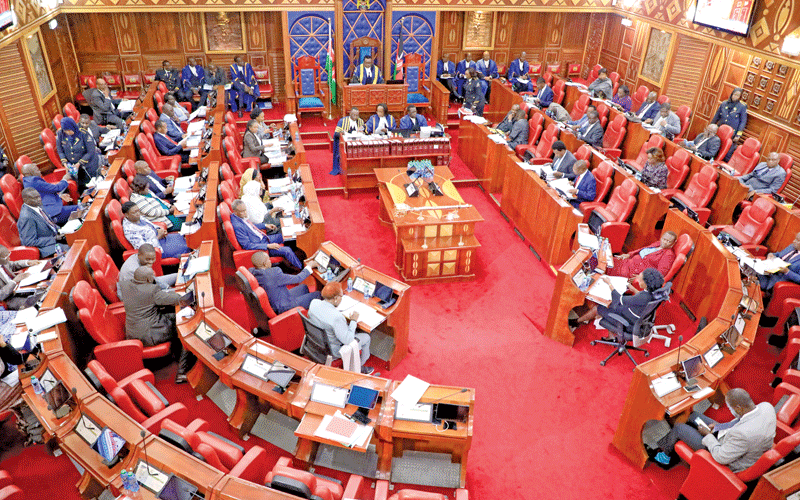Revenue impasse need reason not allies or cynics

The last six Tuesdays have been fairly interesting, and our Senate decided to adjourn and treat us to the anxiety of waiting .
Interestingly for us Kenyans, the propensity to feed on second-hand information seems to be our undoing ; we have made it easy for the political class to frame how we understand issues.
The Commission on Revenue Allocation (CRA) did not just do its job, it also made public an abridged yet elaborate version of third generation revenue sharing formula.
A reading of this provides an understanding of how a few leaders have politicised the formula for political expediency.
CRA recommended an allocation to cushion counties with negative reduction in revenue exceeding five per cent.
Secondly and importantly, it recommended a formula for a phased-in approach to ensure service delivery in counties are not disrupted.
Thus, the grandstanding by senators on who is fighting for Kenyans and who is against devolution is political posturing.
You see, in a functional and disciplined democracy, parliamentary political parties push through the bills on basis of their developmental agenda.
This kind of institutionalisation of decisions and position on issues, affords individuals with divergent views the opportunity to improve rather than shoot down proposals.
This is the reason parliamentary political parties put members in various committees on the basis of their professional prowess and intellectual infrastructure.
When individuals emerge with different permutations contrary to party positions and way off the legally anchored CRA formula, we need to interrogate their intentions.
Granted, loss of revenues for even one county is something very few would appreciate, but why run away from the noble recommendations by CRA?
The big issue is not only the per capita basis upon which the whole debate revolves, but the conspicuous fact that seven years later, not much promise is seen in the equalisation fund, and value of the development fund and poverty index factors.
My interaction with clever economists has made me understand both land mass and labour (population) are critical economic development factors and we cannot run away from the need to allocate more to areas where more people are involved in economic activities, given they are a critical cog in economic development.
Land mass can only be a resource if utilised economically and viably, but population, especially a healthy one with access to the capital infrastructure is critical in economic exploitation of land.
Critics have also pointed out, and probably rightly so, that there was an original ‘sin’ committed in the first two generation formulae.
Addressing the ‘sin’ has proved a herculean task because of our politician’s proclivity to grandstanding.
A few years ago, I was on a Think Tank trip to China and the objective was to understand Xi Jinping’s Targeted Alleviated Poverty.
Flipping back to my notes, I am convinced we may want to contemplate combining all parameters meant to bridge the gap between the privileged and marginalised counties and increase the bounty directed to the latter, but only for qualified access.
These counties can then access funds only through strategically defined economic development goals.
Pegging access to these funds on viable strategic development goals is a sure way of ensuring that we only fund strategic plans that can inject revenues to our national coffers.
Awarded marginalised counties must institute concrete development strategies and monitoring and evaluation systems.
That way senators and citizenry will have governors to put on the spot if such funds do not end up in the counties. — hesbonhansen@gmail.com










